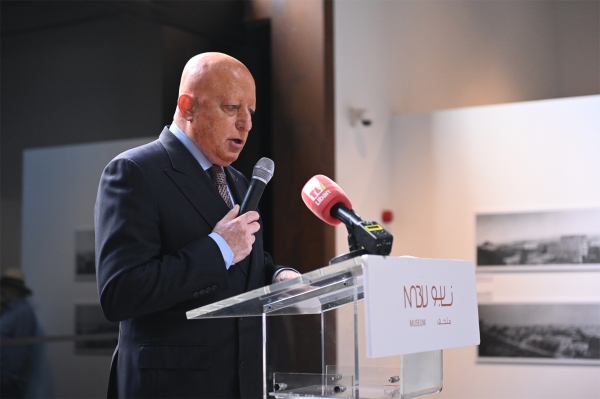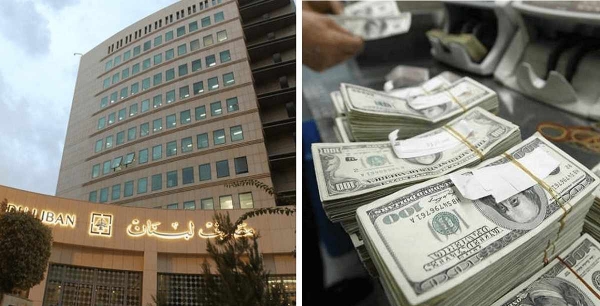Emigration of the Lebanese : Perpetual Drain-25% of the Lebanese emigrated 25% are awaiting their visas 174,000 left the country over the past three years
This begs the question of what the state of the Lebanese is in sectors such as health, education and the provision of services and directs attention towards major issues including job opportunities, unemployment rates and emigration, the subject of our study.
A higher rate of emigration was recorded during both the First World War in 1914 and the Civil War in 1975. The return of peace and stability, in particular starting in 1993, slowed down rates of emigration but there has been a marked increase in emigration during the past three years as we will demonstrate below.
Number of registered Lebanese: 5.2 million
Until the end of 2014, the number of the registered Lebanese i.e. the citizens holding the Lebanese nationality whether they lived in Lebanon or abroad, stood at 5,227,000. Over the past ten years, the Lebanese population has increased by an annual average of 73,000, equivalent to 1.4% yearly.
Number of residents: 3.9 million
Lebanon lacks accurate data on the number of the Lebanese nationals living in the country. Estimates suggest that there are roughly 3.9 million Lebanese residents, accounting for 74.6% of the holders of the Lebanese nationality.
Number of Lebanese residing abroad: 1.3 million
Based on the number of the Lebanese nationals and that of the Lebanese residents, we infer that the holders of Lebanese nationality living abroad total roughly 1.327 million, accounting for 25.4% of the registered Lebanese. More than one quarter of the Lebanese are staying overseas either as permanent or temporary residents. Thus, all talk about the tens of millions of emigrants dispersed abroad, particularly in South America, are therefore far from true. Those tens of millions may be of Lebanese origins but they have not acquired the Lebanese nationality because their ancestors emigrated from Lebanon hundreds of years ago and cut off contact with their home country.
Number of travelers
The passenger traffic recorded at the Rafic Hariri International Airport is the most accurate criterion in monitoring the travel activity and movements of the Lebanese, for travel via Syria is not reflective of the reality of departures and arrivals. According to the activity at the airport, the travel patterns of the Lebanese have seen a significant rise over the past three years as illustrated in Table 1. From 1992 to September 2014, the number of Lebanese who departed totaled 508,407, accounting for 38% of the Lebanese emigrants abroad. While a decline in emigration was evident between 1994 and 2010 compared to the post-war period (1992-1993), this phenomenon began to pick up momentum over the past three years (2011-2013) with 174,704 Lebanese leaving the country during this period, i.e. an annual average of 58,234 Lebanese, up from 14,560 between 1995 and 2010, meaning an alarming increase by 43,674 Lebanese or 300%.

شاهد الجدول كاملا

شاهد الجدول كاملا
Characteristics of Lebanese emigrants
Lebanese emigrants are distributed across different social, economic and sectarian classes rendering the Lebanese diasporas a faithful depiction of the reality and makeup of the residents. Emigrants are distributed as follows:
Lebanese emigrants by age group
Emigrants are distributed across all age groups, foremost of which the age range of 25 to 29 at 32% followed by the range of 30 to 34 at 28%.
The age pyramid as prepared by the Central Statistics Administration in 2007 is posted below:


شاهد الجدول كاملا
One may note that the young age group between the ages 20 and 44 accounts for 39.1% of the Lebanese population. However, this segment makes up 82.6% of emigrants, a percentage carrying disturbing undertones and heralding a potential decline in the young age structure among residents.
Statistics in the United States and Canada show that the Lebanese immigrants in those age ranges make up 53.8% and 58% respectively.
Lebanese emigrants by level of education
University graduates constitute the largest portion of emigrants at 46.3%. This percentage plummets to 1.6% for vocational education graduates. The following graph illustrates the distribution of emigrants by the level of their education.
A study conducted in 2007 on the living conditions of Lebanese families revealed that university students account for 15.8% of the people aged 20 and above. However, the percentage rises to 46.3% among emigrants in the same age group, which points clearly to the presence of brain drain as well as the material losses incurred as a result of this drain.

شاهد الجدول كاملا
Emigrants by profession
Emigrants work in different occupations as illustrated below:


شاهد الجدول كاملا
According to Canadian and American statistics, specialists, the self-employed and technicians rank first among immigrants followed by executive and administrative officers, attesting yet again to the loss of competent human capital.
The Lebanese determined to emigrate
Information International conducted between November 20 and November 24 a public opinion poll on emigration. The poll, which was administered by telephone, included a sample of 500 respondents distributed across all Lebanese regions, depending on the size of each sectarian community.
People considering emigration
35% of the respondents expressed their desire to emigrate from Lebanon, compared to 65% who did not consider leaving (Graph 1).
The wish to leave the country is not peculiar to a single sect; rather, it is widespread among all sectarian groups. However, contrary to previous trends, this inclination seems relatively higher among Muslims, in particular the Sunni and Alawites, when compared to Christians. This could be attributed to the large waves of Christian emigration in the past, which may have depleted the numbers of Christians willing to leave and also resulted in an increase in older Christian population in addition to decrease in birth rates among those who chose to stay (Table 2).

شاهد الجدول كاملا

شاهد الجدول كاملا

شاهد الجدول كاملا
Close to half of the people seeking or contemplating emigration from Lebanon (45%) have already taken steps to realize their wish:
- 7% have obtained their visas and are in a process of packing up
- 16% have applied for visas and are awaiting results
- 22% are preparing the required documentation for visa application
Conversely, slightly over half of the respondents, 55%, have made no discernible moves towards emigration. They are distributed as follows:
- 27% have made no arrangements for leaving the country
- 28% are waiting until their financial situation improves so they can begin the application process
Destination countries: Canada on top
Canada ranked first among the countries where the respondents wish to live permanently at 13%, followed by Australia at 8%. European countries were selected as the most popular destination by 7% of the sample, the US by 7%, Germany by 5% and France and Sweden by 4% and 3% respectively. Respondents reported another 13 destinations, each standing at less than 3%. No destination country was reported by the remaining 40% (Graph 2).
Reading into numbers
As illustrated above, emigration hit great highs in the years following the Civil War with 86,495 people leaving the country between 1992 and 1993. Sympathizing with the Lebanese fleeing their war-torn past, at the time destination countries facilitated the issuance of visas for them.
However, emigration rates saw a gradual decrease after 1993 until 1998, which was marked by the return of a significant number of emigrants. Emigration patterns fluctuated afterwards, reaching a considerable high during the July War of 2006, then trending gradually downward only to register a drastic increase between 2011 and 2014.

شاهد الجدول كاملا
The emigration of 174,704 Lebanese or roughly 13% of the total emigrant population in just three years should sound alarm bells for its annual average rate (58,235) is more than triple the annual average rate recorded between 1992 and 2010 at 16,327.
The phenomenon becomes yet more critical upon realizing that close to 46% of the emigrants are university graduates and close to 83% are of young age. This study shows that the Lebanese are all unified under the common wish of seeking permanent residence outside their own country.
The drain that Lebanon has been suffering in its public finances and other sectors, foremost of which are infrastructure, education and public health, has transformed to a brain drain resulting in the flight of qualified human capital.
This cross-sectarian brain drain is nothing less than shocking for researchers. It includes youths, families, university graduates and experts. The number of graduates who left the country over the past three years, for example, is nearly equal to the student community that graduated during the same period. It is as if all newly graduated packed up and left.
The Central Administration for Statistics revealed that close to 23% of both public and private employees are top cadre personnel, managers and experts amounting to roughly 300,000 people of the total labor force in both sectors. Thus, it seems that close to half of this number left Lebanon in the past three years. The Central Administration for Statistics reported that 54% of the economically active population is university graduates, a percentage that runs near the 46% of university graduate emigrants.
Finally, since 83% of emigrants are youths, then close to 25% of the entire Lebanese population emigrated.
Notes:
1- Annual births in Lebanon stand at 90,000 and a significant number of the births occuring abroad are being registered in Lebanon.
2- Emigration and travel movements need to be addressed based on countries of destination. Emigrants in the Gulf countries and Africa, for instance, are more connected to their homeland than those in the US and Australia.
3- The Lebanese who left the country recently must have headed to the Gulf countries and Africa because European countries, Australia, Canada and the US determine the number of visas to be issued annually. Australia, for instance, issues a few thousands of visas to the Lebanese every year.








Leave A Comment